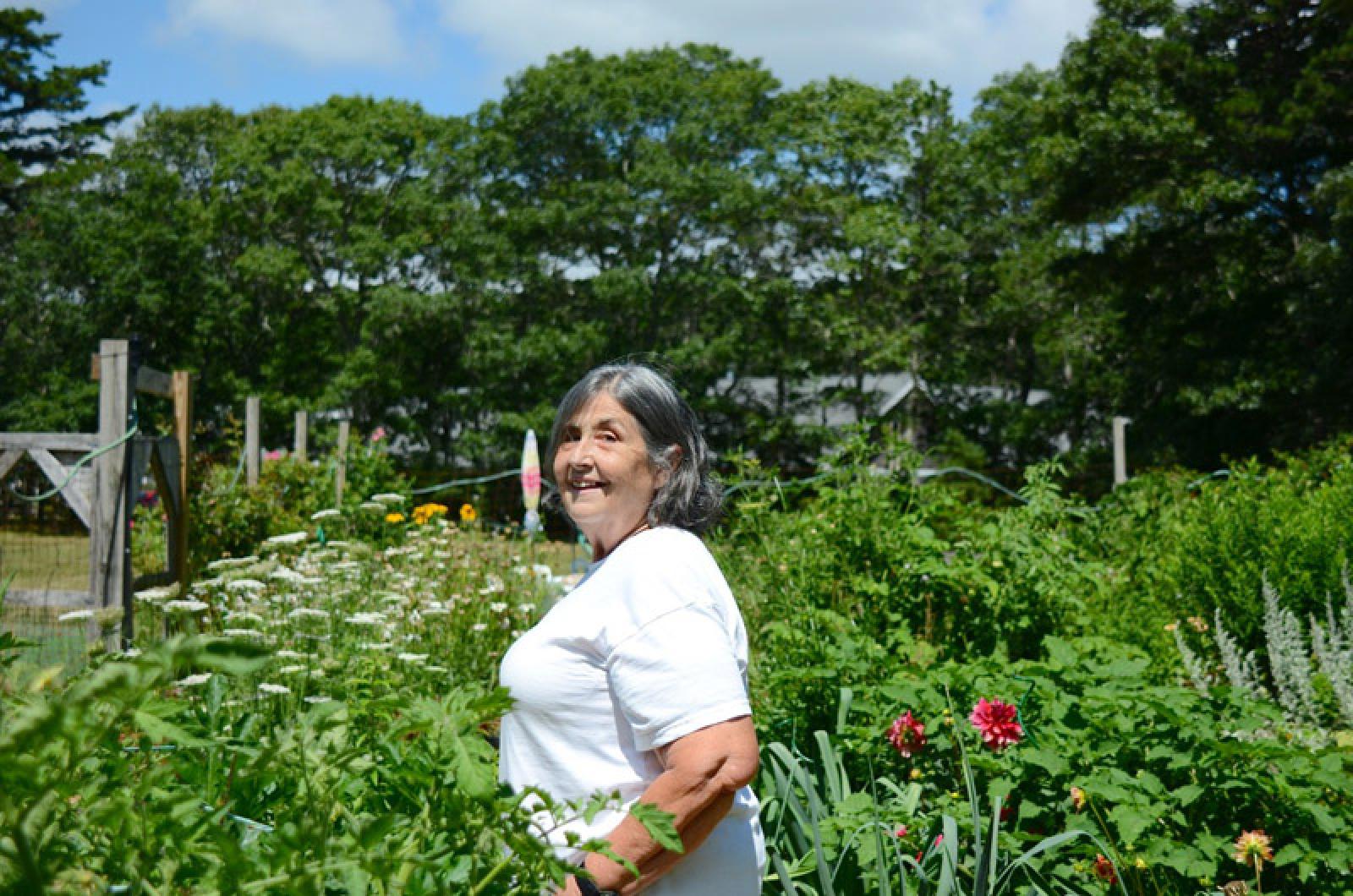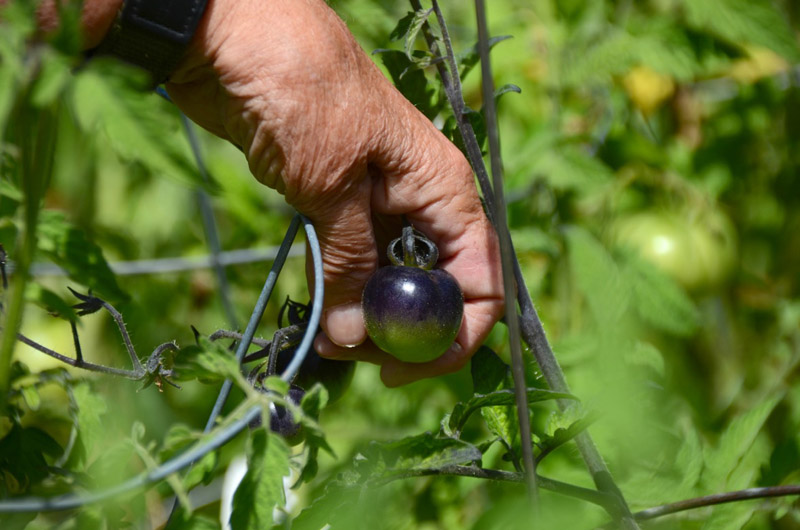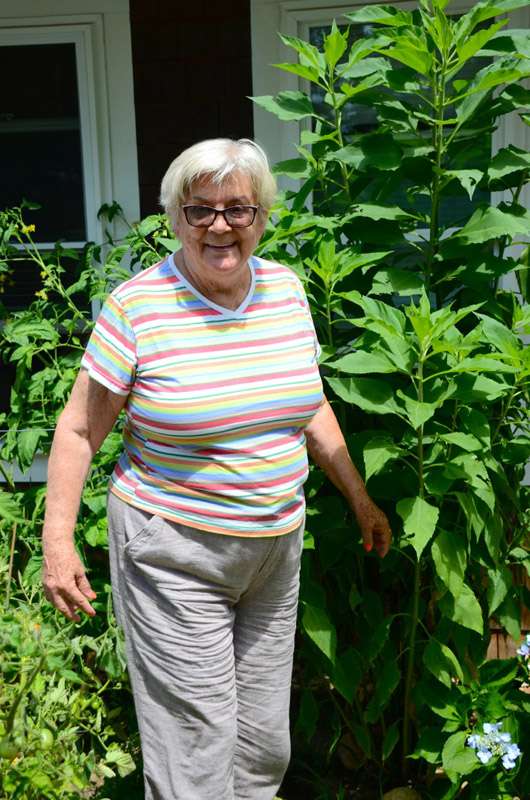When I mentioned the term victory garden to folks while researching this story, they either drew a blank or thought I was talking about the PBS series or Marian Morash’s companion cookbook.
Victory gardens were more than that. During World War II, as part of the war effort, the government rationed many processed foods. Much of America‘s canned food was sent to feed troops and civilians in Europe. Fresh fruits and vegetables were hard to harvest and move to market due to labor and transportation shortages. So the government turned to its citizens and encouraged them to plant victory gardens. They wanted individuals to provide their own fruits and vegetables.
The program made a difference. By May 1943 there were 18 million victory gardens in the United States: 12 million in cities and six million on farms. Some estimates put the number as high as 20 million. In time these gardens would provide nine to 10 million tons of fruit and vegetables to be consumed on the home front.
I was three years old when my parents joined other Americans and planted a victory garden. Not ideal candidates for such an undertaking — a street kid from Brooklyn and a Park Avenue debutante, recently moved to Cape Cod to write, sculpt and raise their kids in a country environment. Neighbors were dubious. So were the New York relatives.
But thrive we did, kids, parents and the first year’s vegetable garden.
Emboldened by that early success, the folks expanded into livestock. Chickens first. A noisy box brought home from the post office was opened and dozens of downy chicks emerged to our squeals of delight. Little did we know these the lovely little chicks would be providing more than eggs. Months later we would watch them run around with no heads: what chickens do for a few moments after their heads are chopped off on the way to the stew pot.
Next came the sheep, with wool to be made into blankets. Then a violence-prone goat. Hardly a day passed without a child, knocked to the ground by the billy goat, weeping and complaining: he smells like pee, he smells like pee! In a brief lesson on reproductive biology, my father explained that male goats urinate on their beard to attract female goats. This goat had very long whiskers, almost to the ground. To this day one of my sisters still gags at the smell of goat cheese.
Why keep the goat? My mother seemed to like him, sharing as they did a fondness for Camel cigarettes; late afternoons would find the pair in the orchard, my mother inhaling deeply, her companion happily eating the butts.
With the vegetable garden flourishing, my father turned his attention to the ancient apple orchard, coaxing enough fruit from the gnarled trees for pies and applesauce. In a quirky move, quite in keeping with his personality, the man taught himself tree grafting. To the delight of his children and curiosity of neighbors, he made a branch of golden apples sprout from a red apple tree. Magic, we thought.
We ate well during the war. Nursery food at our house was rather sophisticated fare. While friends down the street were eating things floating in Jello, we were served eggs Florentine: our own eggs baked on our own spinach topped with a little cream from a neighborhood cow. My mother served crepes stuffed with everything imaginable. No Campbell’s soup for us; we made clam chowder with bivalves dug in our little cove and potatoes and onions from our victory garden.
The only vegetable we would not eat was okra — too slimy. But every year I continued to badger my father into planting it; I loved its hollyhock-like blossoms. Now 70 years later I grow okra with enthusiasm, and not only for its lovely purple blossom; my sister’s southern in laws finally taught me how to cook it: rolled in cornmeal and fried — delicious.
We continued to grow our own vegetables in the years after the war, but when my father’s career path veered from novelist to diplomat, we went to live in cities and lost our connection to the dirt.
The gardening stopped. But not my passion for growing things, instilled in those early years. The passion did not die during the decades I lived and worked in cities; it simply went dormant, except for floating the occasional avocado pit in a cup of water in the hope something might sprout.
Over a half a century and several orthopedic surgeries later I have found my way back to the garden, the Woodside Community Garden, specifically, with raised beds built a couple of decades back by Island Elderly Housing for its tenants. Twelve people participate in the garden today — three of them like myself former childhood victory gardeners — and there is a waiting list. We grow everything from mushrooms to asparagus, with heavy emphasis on the ever popular Vineyard-grown tomato.
Delighted to have finally found the time and the place to plant, I feared I would no longer have the physically ability for serious gardening. A surgical accident at the Brigham had left me crippled; on good days I need a cane, on bad days I rely on a walker. “Shouldn’t be a problem,” advised a Martha’s Vineyard Hospital physical therapist gifted with an ability to think outside the box. “Your walker can be your wheelbarrow.”
It worked. Beautifully. Way more user friendly than a wheelbarrow, the folding walker pops in and out of my truck with ease. Whatever cargo needs transporting, delicate seedlings or 40 pound bags a manure, it fits on the seat of the walker. The greatest advantage of all? No more trips to the ER with back strain after carrying giant bags of compost on my shoulder. Now my walker/wheelbarrow bears the strain.
I am a better person when gardening, physically, mentally and spiritually.
The boost in mental well being is definitely real. But whether it comes from the biochemical boost to the brain found in sunlight exposure or the fulfillment of some basic atavistic urge to grow food, I don’t know.
I do know that during last year’s dreadful winter, planting helped preserve my sanity. I was in desperate need of a grower’s high. My winter depression was strong, my therapeutic sun box not quite up to the job. So I started planting a little early. Very early, actually.
In mid February I dug out the previous year’s tomato seeds and started planting in little peat pots on my window sills. Within days I was transplanting into Dixie cups and shortly thereafter I had a situation on my hands. Hundreds of tiny tomato plants (12 varieties) threatened to engulf every surface in my apartment.
I called my friend with a greenhouse, Kirsten Gannon, one of the kindest woman on the Island. And as a former commercial fisherman in Alaska, also among the strongest. Within a day she had axed her way to the Gannon greenhouse and turned on the heat. We swaddled the seedlings like premature babies, improvised transport incubators and moved to them to the greenhouse.
By April we had another situation on our hands; we outgrew the greenhouse. Now the tomatoes were outside and on their own. Some we planted. Some we sold out of the back of my pickup. A lot we gave away. All survived, thanks to a mild spring.
That February mental health exercise is already bearing ripe fruit. For the first time in memory I ate a tomato sandwich in the middle of July.
Anne Sylvester retired to the Vineyard 13 years ago after a career in print and broadcast journalism in New York and Washington, D.C.







Comments (7)
Comments
Comment policy »